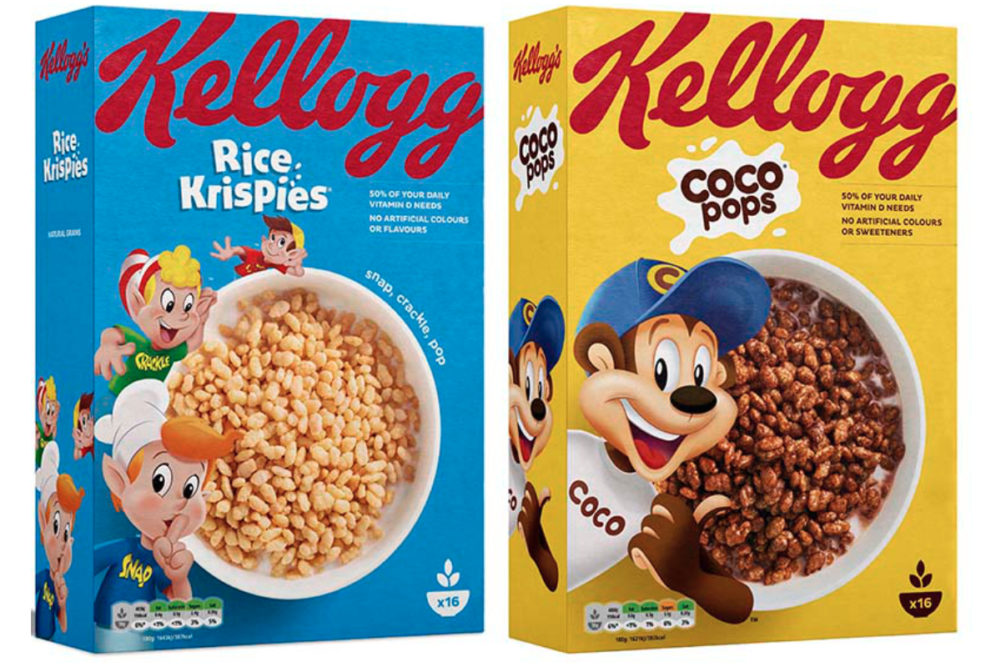LONDON — Kellogg Co. has unveiled significant planned changes for its ready-to-eat cereals portfolio in the United Kingdom, including sharp cuts in sugar and salt content and new packaging formats to reduce its carbon footprint. The announcements were made as part of the release of Kellogg’s new Wellbeing Manifesto.
As part of its plans, Kellogg said it will reduce sugar content by 10% from its children’s cereal portfolio, making them all non-HFSS by the end of 2022. High in Fat, Salt and Sugar (HFSS) is the classification for all food and non-alcoholic drink that is high in fat, salt, and/or sugar according to the Nutrient Profiling Model, managed by Public Health England.
Kellogg also plans to cut the sugar content by 11% in Krave, a popular cereal for young adults.
Meanwhile, company plans call for salt in cereals to be cut by at least 20% by the end of 2022, a move that will mean four out of the top five selling Kellogg’s cereals will now be non-HFSS.
Kellogg’s Wellbeing Manifesto also includes plans for reducing its carbon footprint. Kellogg said it has launched a new type of smaller cereal box with less air space and packaging. As a result, Kellogg said it will use almost 191 tonnes less cardboard and plastic annually which, combined with transport efficiencies, will remove 10% of carbon a year. Kellogg said the new boxes of cereals such as Special K and Bran Flakes will include the same weight of cereal and will roll off production lines in plants in Manchester and North Wales this year.
“People are rightly demanding more from companies like ours, and everyone expects good food to do a world of good, too,” said Chris Silcock, vice president of Kellogg’s UK. “We agree. That’s why we are launching a new effort to improve our foods. It’s built on the work we’ve done over the past number of years to reduce things like sugar and salt while keeping the same great taste people expect from us. And we’ll continue to act here as we know it is important. But the impact of our food is much broader than just what goes in the box. It’s about how we grow our ingredients and the impact we have on the planet and how we cook and make our food. It’s also about the social and emotional role of food and how it brings people together.”






